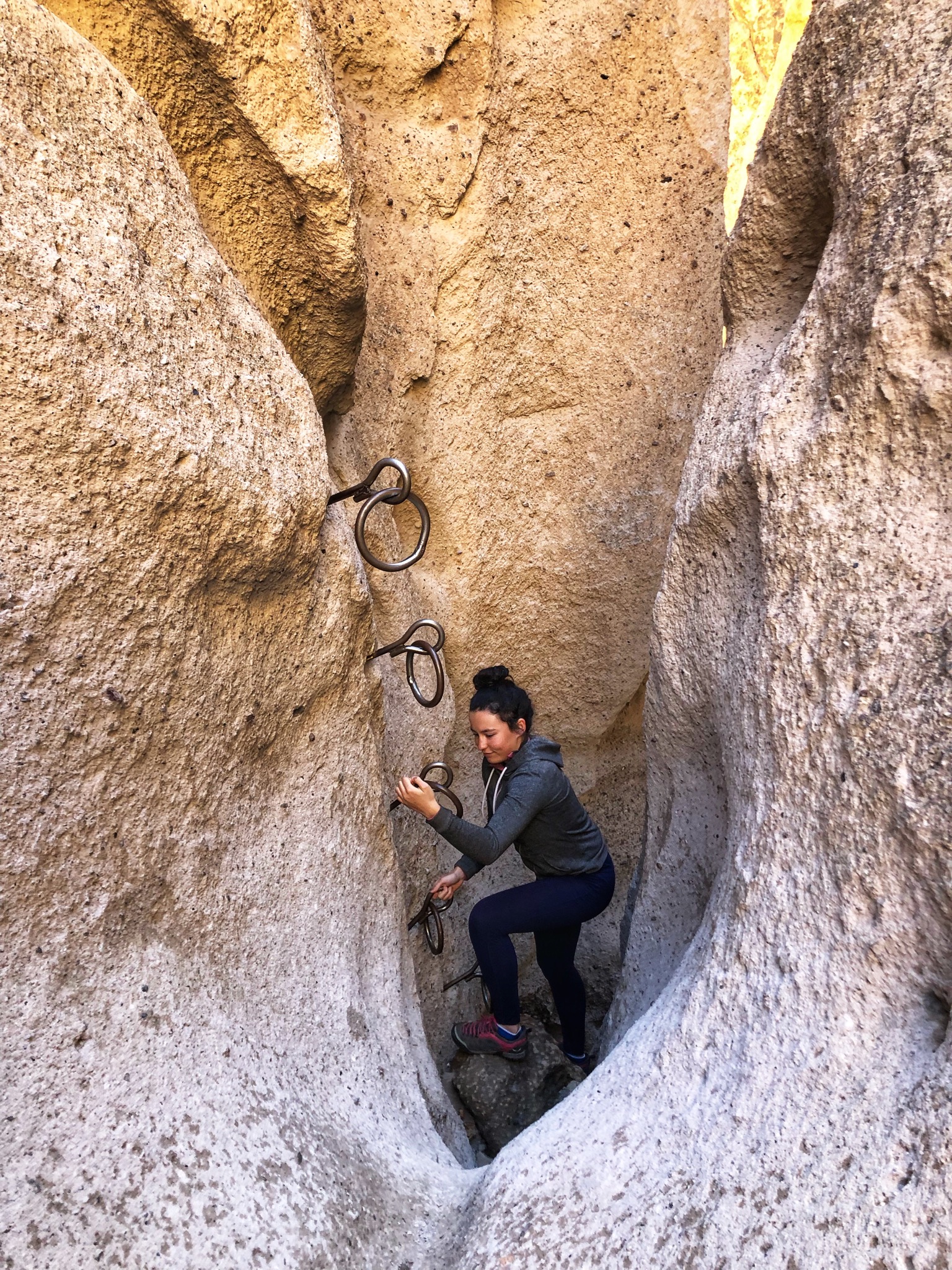The Mojave National Preserve
Pencil cholla in front of a big Joshua Tree.
Great campspot among the Joshua Trees.
The Mojave desert is the driest desert in North America, receiving less than 2 inches of rain a year. One of the most significant dunes in North America, the Kelso Dunes stick out like a sore thumb in the landscape of the Mojave.
It is a pretty challenging hike in the sand, but they are known as the singing dunes, a phenomenon you can experience if you slide down slowly, generating a low-frequency rumble that can be both felt and heard. Watch this YouTube video if like me, you have a hard time picturing what it can sounds like. We went to explore them, but didn’t have the courage (or the time) to climb all the way up.
Our favorite place was the Rings Trail; it’s one of the best 2 miles hikes you can do. We decided to go down the rings and back up at the end of Banshee canyon to experience the rings again, since the rest of the trail is more traditional hiking through the desert.
Banshee Canyon
The Kelso Depot is quite the unusual Visitor Center. I wrote its story below.
The Kelso Depot’s beautiful Spanish Colonial revival style architecture.
If you are just driving through the Mojave desert, you might think it is a big expanse of desolate land; but once you take some time to explore its remote corners, you realize it’s a pretty special place with singing sand dunes, lava tubes, cinder cones, abandoned mines and the highest concentration of Joshua Trees in the world. (Near the cross on the Teutonia peak trail, you will find the largest Joshua Tree forest in the world. Most people assume it is in Joshua Tree National Park, but it is actually here in Mojave National Preserve.)
While you are there, take a look at the Cima Dome. Most people would probably go past it if they didn’t know it was special but once you notice it, it is pretty crazy. It looks like the land is being viewed through a fisheye lens (from this site, lots of great info on the area).
We decided to stay at the Hole in the Wall campground since it is located right next to the Rings Trail and since it is one of the only places in the park where we knew we would have decent connexion for work. This campground is 12 bucks a night, first come first served and has water. It is a great spot to stay at and has amazing surrounding mountains and views.
You can camp at most spots in Mojave National Preserve as long as they have fire pits set up. This allows you to be able to camp in some amazing places. Just be sure to respect the environment if you chose a spot like this. Know that the connexion is very spotty in the Preserve and that most place won’t have signal strong enough to allow you to work.
There is no gas and no food in the park, and many of the backroads are washboards and only accessible by 4 x 4.
The story of the Kelso Depot
The first depot was built in 1905, when the Union Pacific wanted a foothold on the West Coast, but the actual building was built in 1924 and included a conductor’s room, telegraph office, baggage room, dormitory rooms for staff, boarding rooms for railroad crewmen, a billiard room, library and locker room.
Originally, the restaurant and telegraph office each had three shifts, operating around the clock. This continued through the boom years of the 1940s, when Kaiser’s Vulcan mine caused Kelso’s population to grow to nearly 2,000. The closing of the mine coupled with diesel engines replacing steam resulted in the UP moving jobs and families out of Kelso. In 1985 the UP decided to close the Kelso Depot entirely.
Believing that the now empty building would become “a target for vandalism, unauthorized entrance, and a legal liability,” the UP Division Superintendent made plans to raze the building. Local residents and others across the region heard about the proposed demolition and began to publicize the building’s plight.
They organized into the Kelso Depot Fund and set about saving the building. While they were able to stop the demolition, the costs of restoration grew too expensive for the group and they turned to local politicians and the federal government for assistance. Members of Congress from the area went to work, and by 1992, the BLM had the title to the building. Renovation of the Kelso Depot began in 2002. The building reopened to the public as the new visitor center for Mojave National Preserve in October, 2005.














